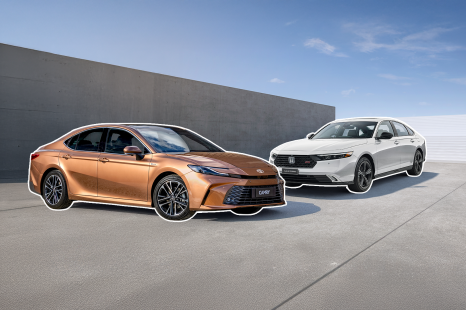

Andrew Maclean
2025 Honda Accord e:HEV RS vs Toyota Camry SL: Spec Battle
3 Months Ago
Hyundai’s latest dedicated EV, the Ioniq 6, is one of the most impressive cars yet from the world’s hottest car company.
Where expert car reviews meet expert car buying – CarExpert gives you trusted advice, personalised service and real savings on your next new car.
Hyundai is on fire right now.
Not only is the Korean carmaker rapidly expanding the line-ups of both its Genesis luxury division and its N performance brand, but it’s also elbowing aside the likes of Volkswagen and Ford and Toyota as it introduces a range of mainstream EVs boasting cutting-edge technologies and advanced features at an affordable price.
The Ioniq 5 crossover launched last year was the first Hyundai to be built on a dedicated EV platform and has since earned plaudits around the world for its compelling combination of design, performance, functionality, and value.
Now comes the Ioniq 6 sedan. Like the Ioniq 5, it’s underpinned by Hyundai’s impressive E-GMP electric vehicle architecture, but it boasts more range and sharper handling than the boxy crossover.
On paper the Ioniq 6 looks to be the most serious rival yet to Tesla’s Model 3. Should Elon Musk be worried?
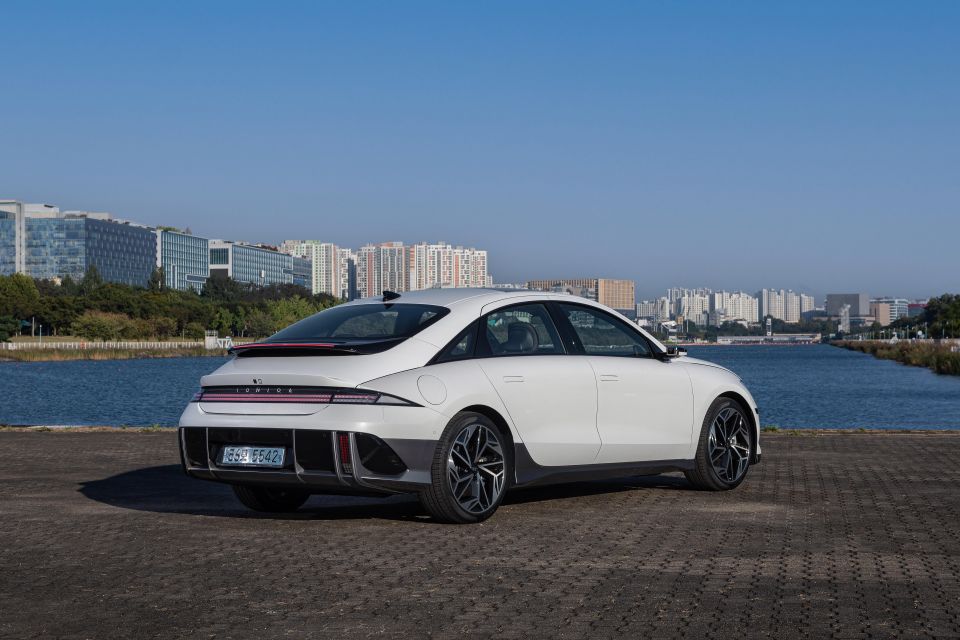
The Ioniq 6 range in Australia will likely be similar to that of the related Ioniq 5 when it goes on sale in the first quarter of 2023, including the car you see here; the dual-motor, all-wheel drive variant with the long-range 77.4kWh battery, fitted with 20-inch alloy wheels as standard.
Final pricing has yet to be confirmed, but local sources suggest it will retail for between $70,000-$80,000 before on-road costs. That would put it right on top of the Tesla Model 3 Long Range ($80,000).
But the Hyundai, which at 4855mm is 225mm longer overall than its American rival, rolls on a 195mm longer wheelbase with much more interior room, is better built, and comes with more standard features – more on that in a bit.

The Ioniq 6’s interior is spacious and well-equipped with a premium ambience that makes the Tesla Model 3 cabin look cheap and spartan. The low cowl means forward visibility is excellent, making the Ioniq 6 easy to place on the road and in tight parking garages.
Measuring 2950mm between the axles, the Ioniq 6 neatly splits the difference between its E-GMP stablemates, the Ioniq 5, which has a 3000mm wheelbase, and Kia’s EV6, which rolls on a 2900mm wheelbase.
The original plan had been for the Ioniq 6 to share the EV6’s wheelbase, says Hyundai Styling Group head Simon Loasby, but the designers fought hard for the extra 50mm to improve the car’s proportions.
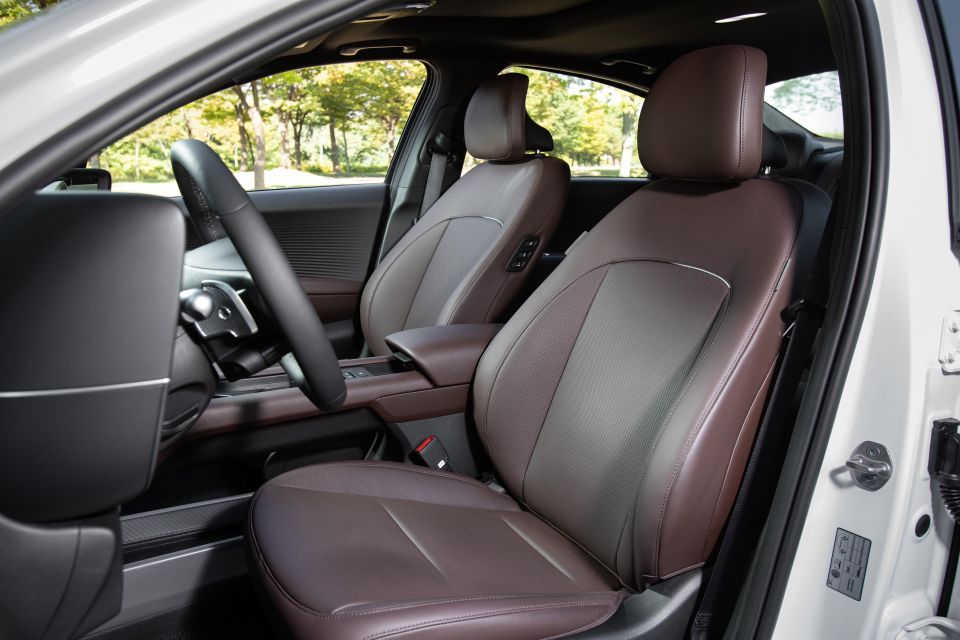
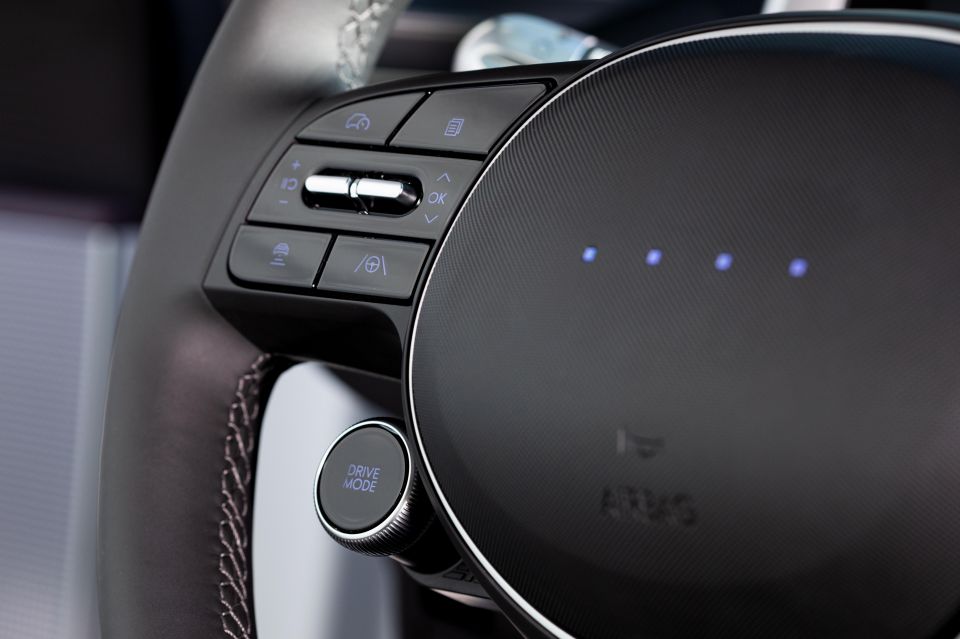
That extra 50mm also delivers plenty of room for rear passengers, especially when compared with the much smaller Tesla Model 3.
Though the Ioniq 6’s dramatically swooping roofline means passengers 190cm or taller will find their heads just brushing the roof lining, they’ll still enjoy almost limo-like knee room.
The boot is relatively shallow – the rear e-motor with its integrated inverter and transmission is packaged underneath – and the boot opening is somewhat small, but the load space is broad and long, and the rear seats will fold flat.
Hyundai decided against making the Ioniq 6 a hatchback because packaging the hinges in the roof would have impinged on rear passenger headroom.
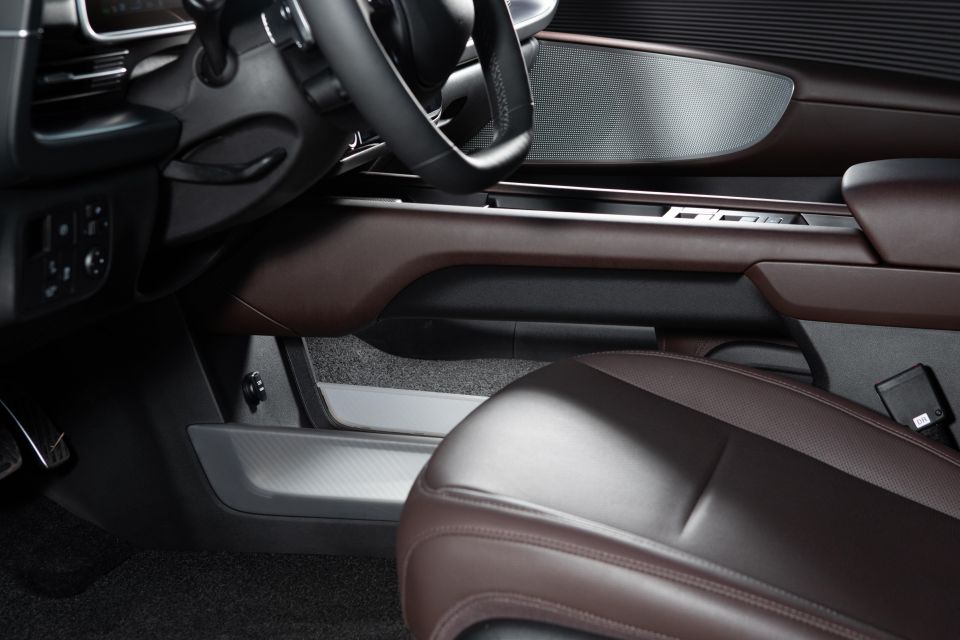
Variable ambient lighting is standard, but the light is bounced off the surfaces of the door panels, so you don’t see light rails.
There’s no Hyundai emblem on the steering wheel, just four pixels that change colour – white when voice activation is used, and green to show the car is charging.
The interior trims use a variety of sustainable materials, including recycled PET fabrics, recycled fishing net carpets, and leather dyed using flaxseed oil.
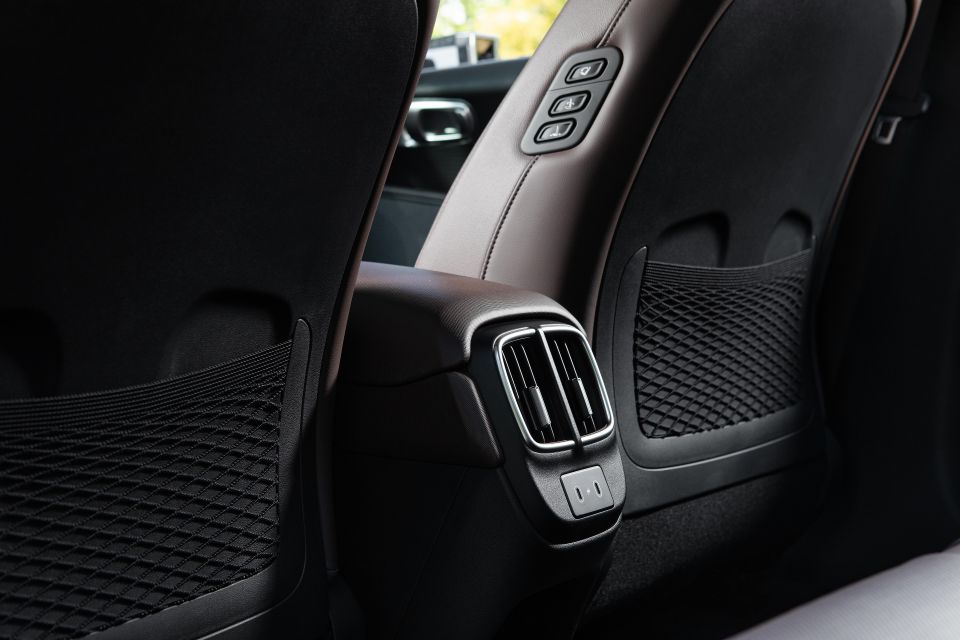
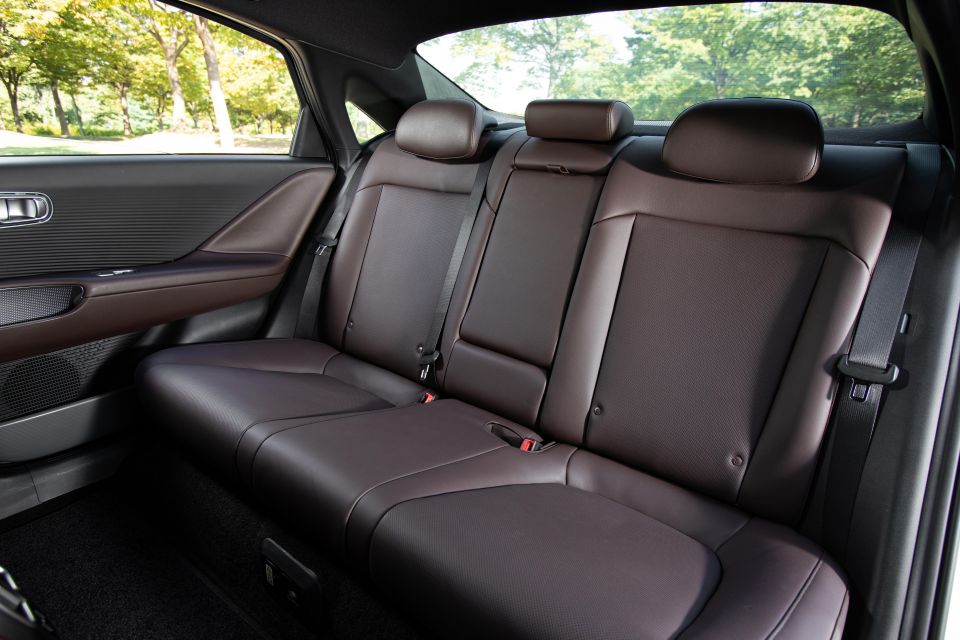
The digital instrument panel is a 12-inch screen, with a second 12-inch touchscreen alongside and above the centre console for the infotainment system. This screen controls the Ioniq 6’s impressive array of standard communications, infotainment, and vehicle management systems.
Apple CarPlay and Android Auto are both accommodated, and a Bluetooth multi-connection facility means two devices can be paired at the same time – one for phone calls and one for music streaming. The premium audio system is Bose branded, with eight speakers including a sub-woofer.
The Ioniq 6 is the first Hyundai to offer over-the-air (OTA) software updates that can upgrade e-motor and battery controllers, plus autonomous driving capabilities, nav system mapping and media software.
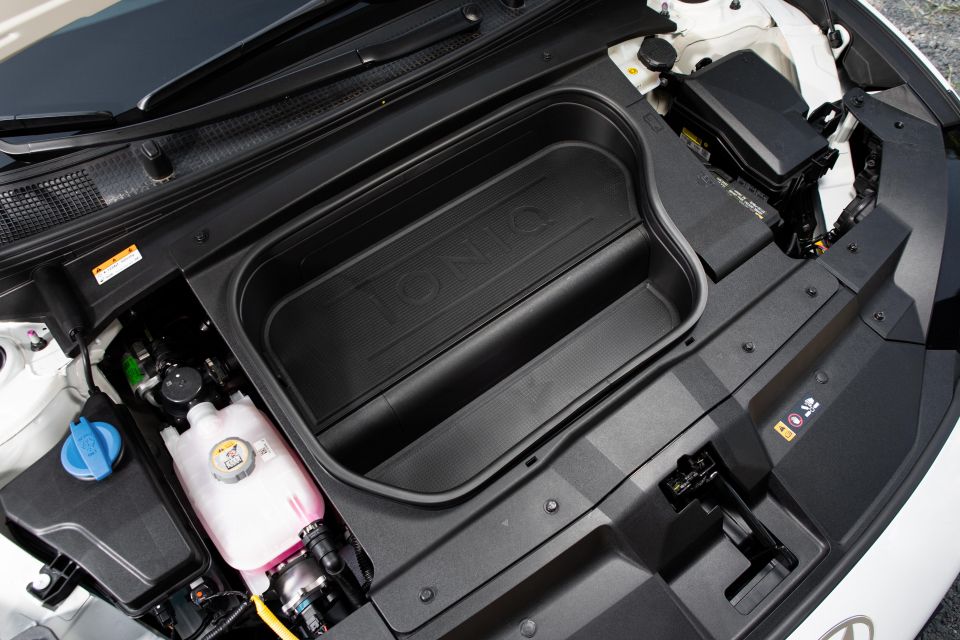
On test we had the top-of-the-range dual-motor, all-wheel drive version with the Long Range 77.4kWh battery.
The two e-motors are not identical. The motor at the rear axle develops 168kW and 350Nm of torque, while the front motor produces 74kW and 255Nm.
System outputs are 239kW and 605Nm, enough to get the Ioniq 6 from 0 to 100km/h in 5.1 seconds, Hyundai claims. That number is likely to be quite conservative, however, given instrumented tests have shown the less aerodynamic dual-motor, all-wheel drive Ioniq 5 easily nails 0-100km/h in about 4.5 seconds.
The swoopy exterior styling is driven by aerodynamics. Hyundai claims the Ioniq 6 has a drag co-efficient (Cd) of just 0.21, which makes it the second-most aerodynamic production car in the world after the Mercedes-Benz EQS, which boasts a Cd of 0.20.
Why should you care? Well, good aero doesn’t just mean less wind noise. Good aero means it takes less energy to push your car through the atmosphere – and if your car has an electric motor, that can mean a big boost in range.
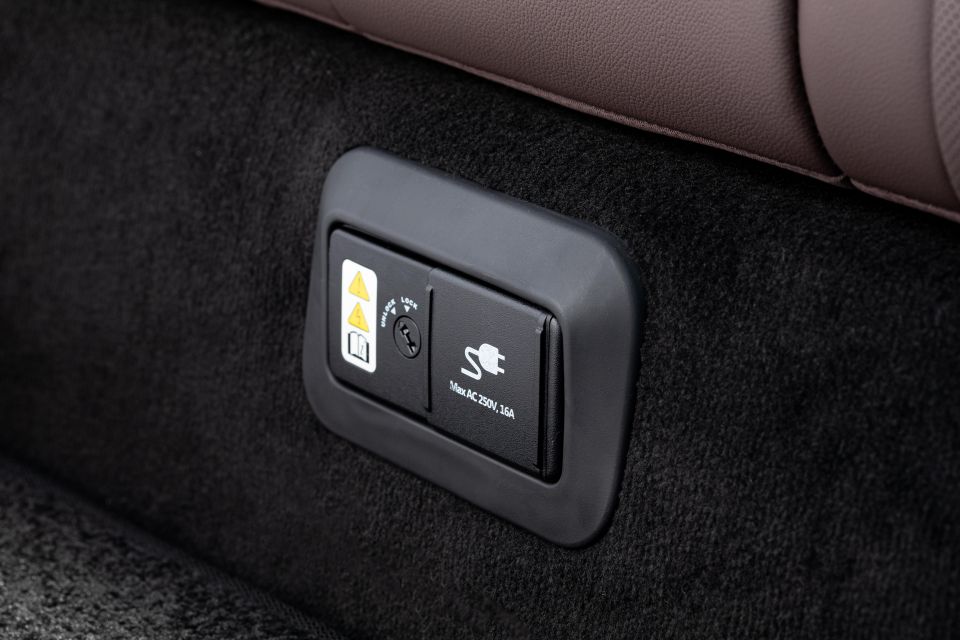
The Ioniq 6 proves the point. Hyundai claims a single-motor, rear-drive Ioniq 6 with the 77.4kWh battery pack has a WLTP-certified range of 614km, compared with 507km for the Ioniq 5 with the same powertrain and battery pack.
True, the single-motor Ioniq 6 is fitted with 18-inch wheels as standard, compared with the 19-inch rims that are the base wheel on the Ioniq 5, and it has slightly better e-motor efficiency and powertrain management.
However, Hyundai aero engineer Sang-hyun Park confirms most of the range improvement comes from the fact the soap bar-smooth Ioniq 6’s aero efficiency is significantly better than the brick-like Ioniq 5’s, which has a Cd of 0.29. “In the EV era, aerodynamic performance is most important,” Park says.
Hyundai says the dual-motor, all-wheel drive Ioniq 6 on 20-inch wheels and tyres has a WLTP-certified range of 519km. That compares with the 430km range claimed for the all-wheel drive Ioniq 5 on 20s. Claimed energy consumption is 16.9kWh/100km.
The 800V electrical architecture of the E-GMP platform means boosting the Ioniq 6’s battery from a 10 per cent charge to 80 per cent will take as little as 18 minutes on a fast charger capable of delivering 250kW or better, 25 minutes on a 150kW charger, and an hour on a 50kW charger. The system is also 400V compatible.
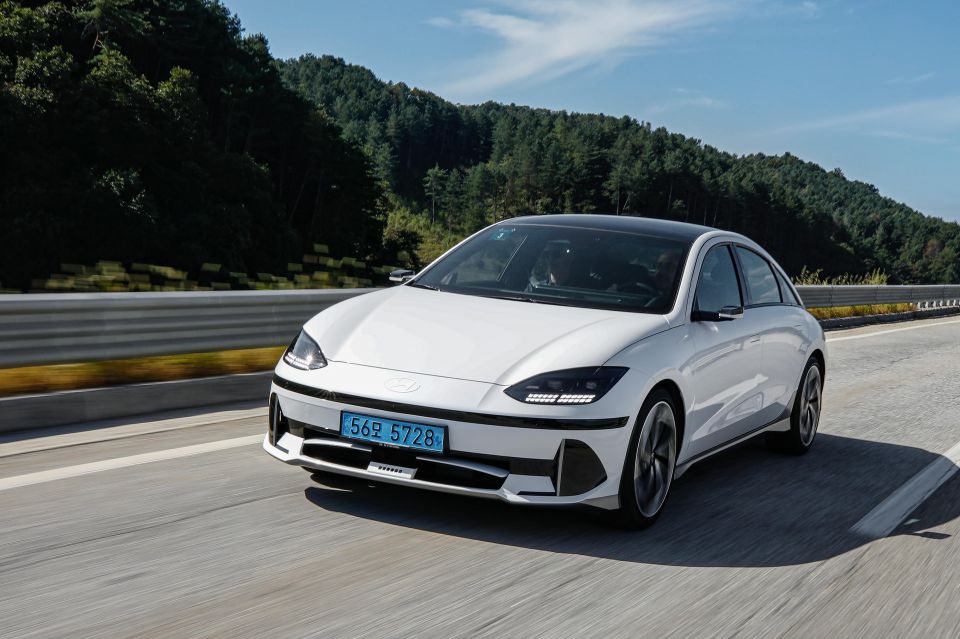
On the road the Ioniq 6 feels very much like a mini-me Mercedes-Benz EQE. Hyundai and Mercedes in the same sentence? Believe it.
The Ioniq 6 is smooth and quiet, as you’d expect of an electric vehicle, but it also has that hewn-from-billet-steel feel that’s a hallmark of the best cars from Stuttgart.
The impressive body rigidity, combined with new hydro suspension bushings, new frequency-sensitive variable shocks, and increased axle stiffness, means impact harshness is very well controlled, even on 20-inch rims and low profile 245/40 Pirelli P Zero tires.
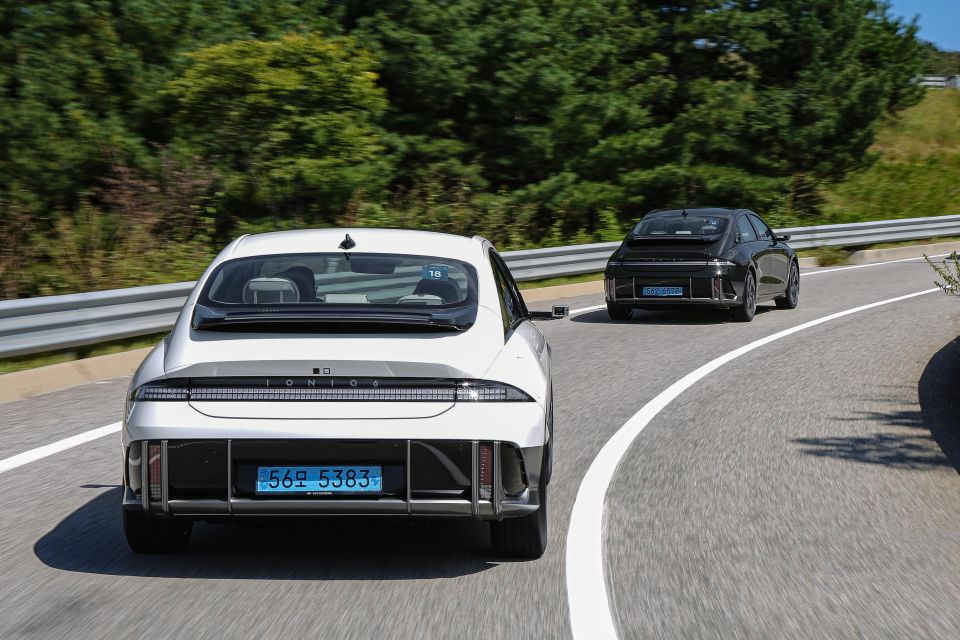
The suspension tune is taut, much more so than the Ioniq 5’s setup. That, and the lower centre of gravity mean the Ioniq 6 hides its mass well on the change of direction, with little roll or understeer.
The steering could do with a touch more feel but in terms of its overall alertness and agility, the Ioniq 6’s chassis is almost like an old-school BMW 3 Series in the way it handles a winding road.
As with the steering, the brakes also feel slightly remote, though the hand-off between regenerative and mechanical braking is seamless.
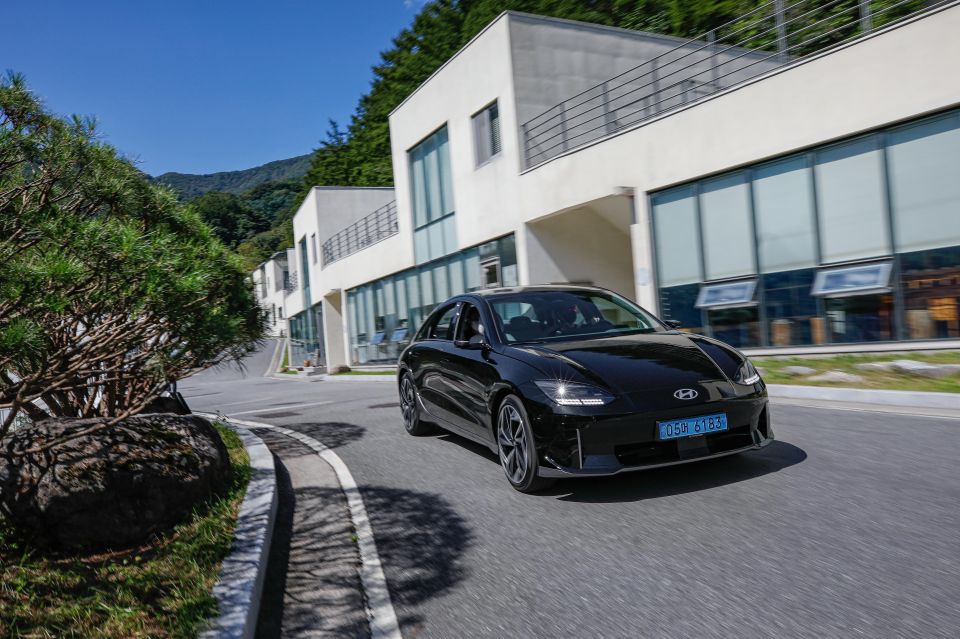
The five different levels of lift-off regen, controlled via the paddles on the steering wheel, allow you to manually adjust the car to your road conditions and driving style.
Level 1 regen basically mimics the coast-down of an internal combustion engined car with an automatic transmission and is the best for all-round driving. Level 4 – labelled iPedal – gives full one-pedal driving that’s ideal for heavy stop-start traffic.
Level 0, which eliminates all lift-off regen, allowing the Ioniq 6 to coast, is perfect for easy and efficient highway cruising.
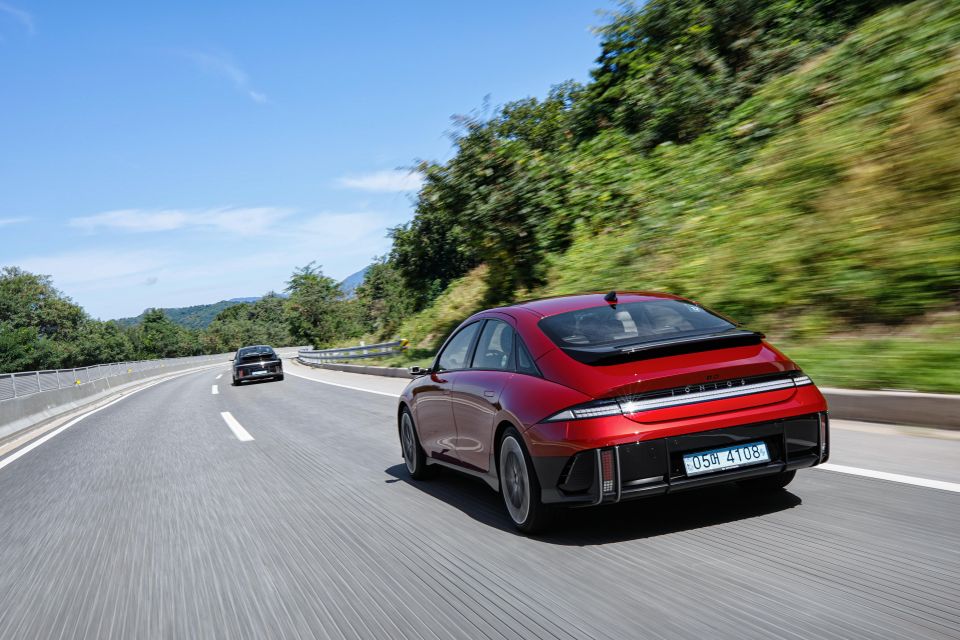
As with the Ioniq 5, the Ioniq 6 offers three drive modes, Eco, Normal, and Sport, each offering different levels of acceleration response that place differing demands on the battery.
Normal is ideal for most driving around town and on the freeway. Eco makes the Ioniq 6 feel lethargic and is obviously designed to eke out maximum range when needed.
Sport adds noticeable sparkle to the Ioniq 6’s response and is great for fun-to-drive winding roads, where the rear-biased instant-on torque really punches the Hyundai out of corners.
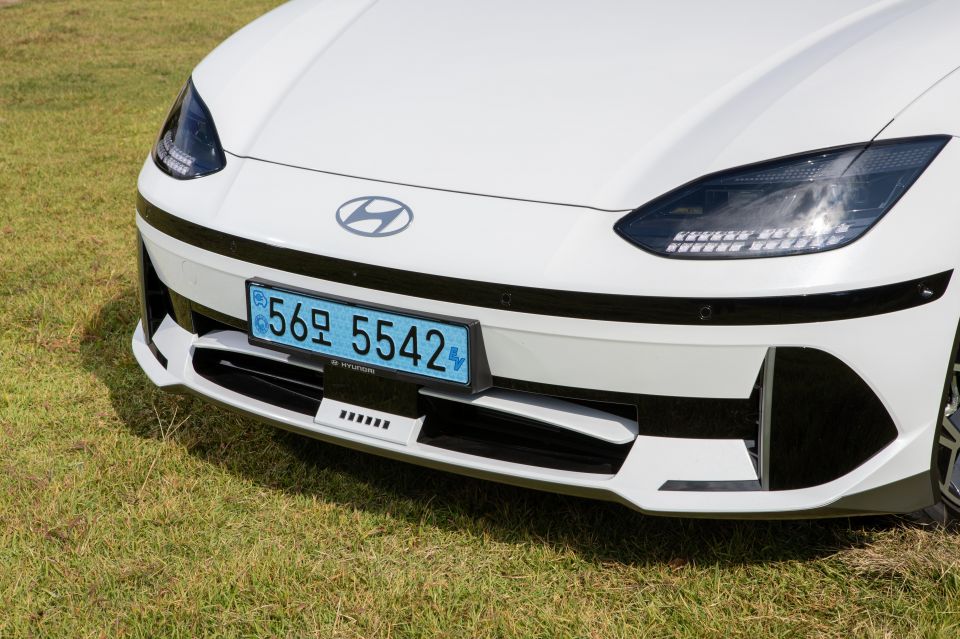
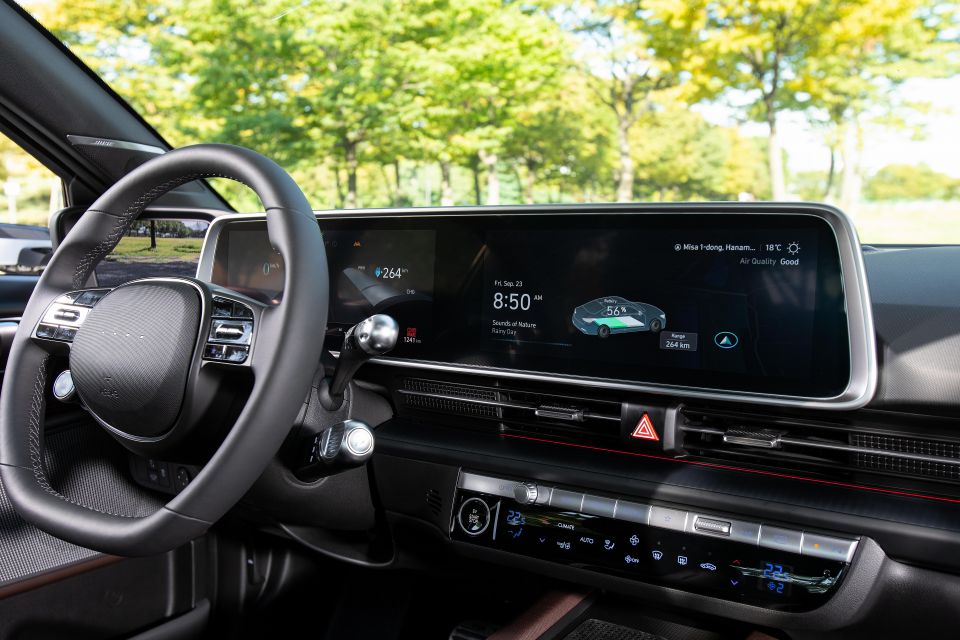
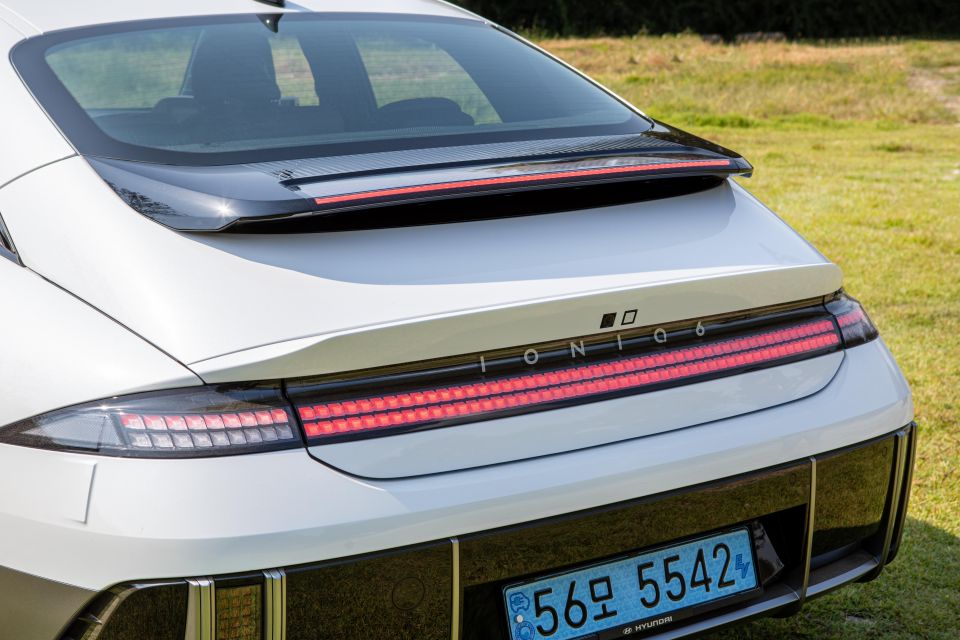
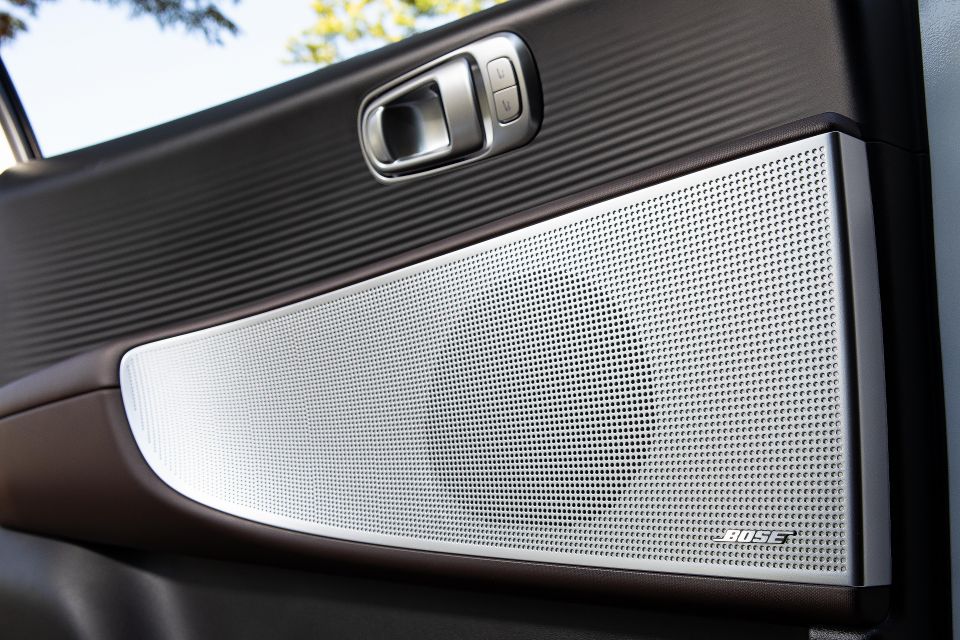
As mentioned, Australian-spec Ioniq 6s will all be fully loaded, with a long list of standard features.
Highlights include:

Where expert car reviews meet expert car buying – CarExpert gives you trusted advice, personalised service and real savings on your next new car.
The Hyundai Ioniq 6 has yet to be tested by ANCAP or Euro NCAP, though it’s worth noting other E-GMP products have received five-star ratings.
Standard safety equipment includes:
Hyundai’s Highway Driving Assist 2 system Helps to maintain a set distance and speed from the vehicle ahead while driving on a highway and centres the vehicle in the lane even while driving through curves.
If a vehicle on either side comes too close, the system will adjust the Ioniq 6’s path to move it away. At highway cruising speeds the system will, when the indicator stalk is moved, automatically change lanes in the direction indicated.
Hyundai offers this feature overseas on other current models too, though it’s currently not available in Australia.
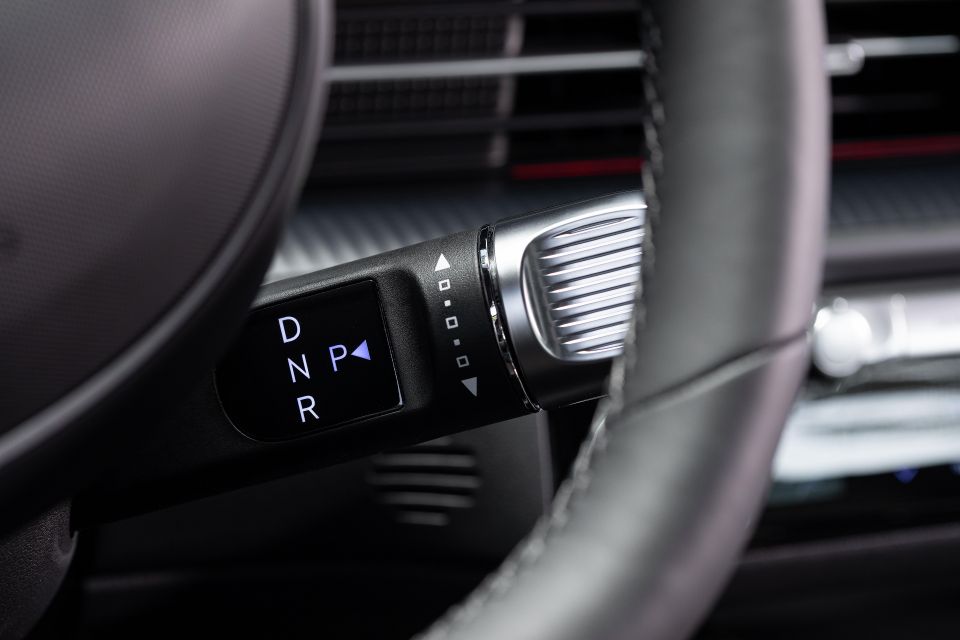
Hyundai Australia covers its range with a five-year, unlimited-kilometre warranty. The high-voltage battery is covered for eight years or 160,000km, whichever comes first.
Servicing, meanwhile, is required every 12 months or 15,000km, whichever comes first.
Pricing for the Ioniq 6’s maintenance hasn’t been confirmed for Australia yet, but the Ioniq 5 with the same drivetrains costs $220 per visit for the first five years.
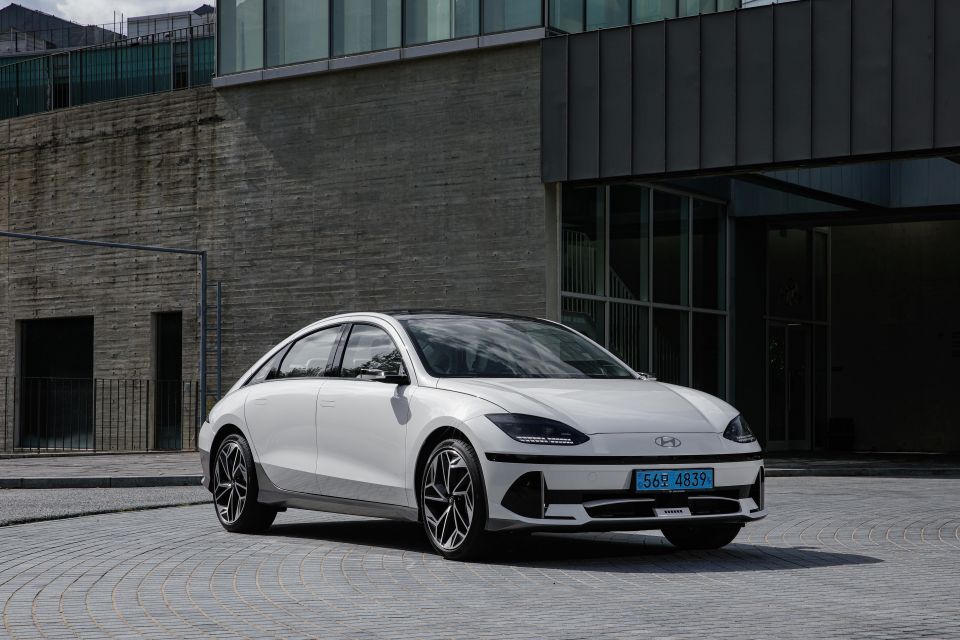
From the way it looks, to the way it drives, to the advanced technologies it can put at the disposal of its drivers and passengers, the Hyundai Ioniq 6 is a sophisticated and intelligent electric vehicle.
It outclasses mass-market EVs from the likes Volkswagen and Toyota and Ford in terms of its performance and features and materials.
Its pricing and quality will give Tesla Model 3 buyers second thoughts. Its interior room and driving refinement will raise the eyebrows of Mercedes-Benz EQE buyers.
But the Ioniq 6 is not just a benchmark Hyundai EV. It’s a benchmark compact sedan.
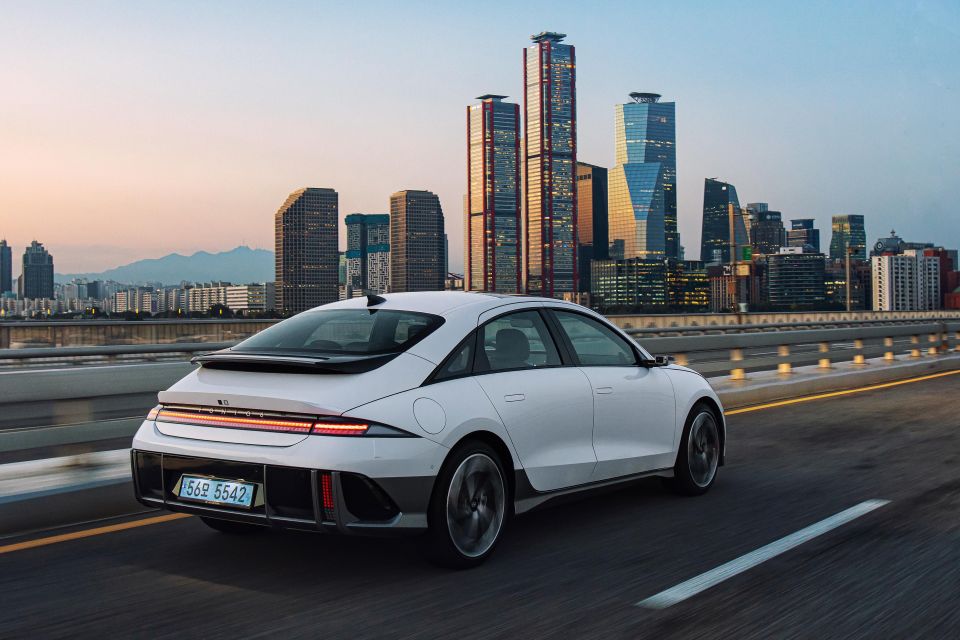
Click the images for the full gallery
Where expert car reviews meet expert car buying – CarExpert gives you trusted advice, personalised service and real savings on your next new car.


Andrew Maclean
3 Months Ago
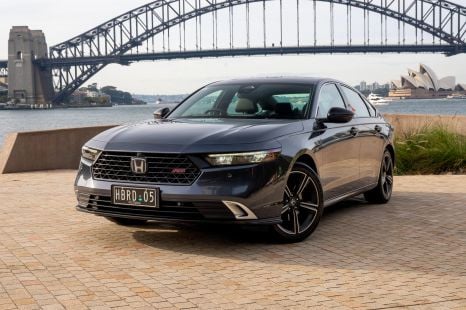

Andrew Maclean
2 Months Ago
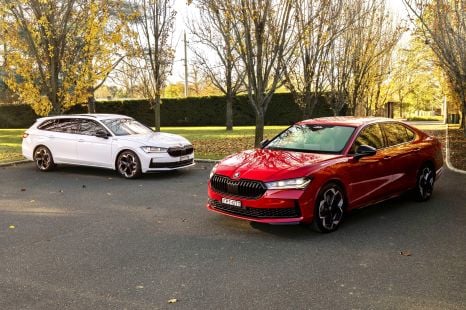

Max Davies
2 Months Ago
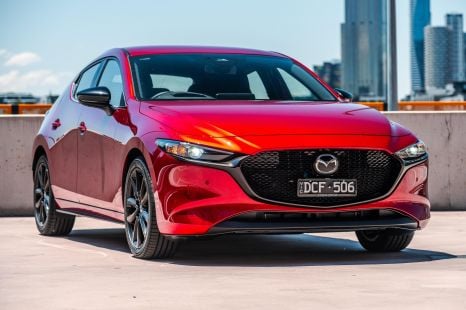

Josh Nevett
2 Months Ago


Josh Nevett
1 Month Ago


James Wong
1 Month Ago